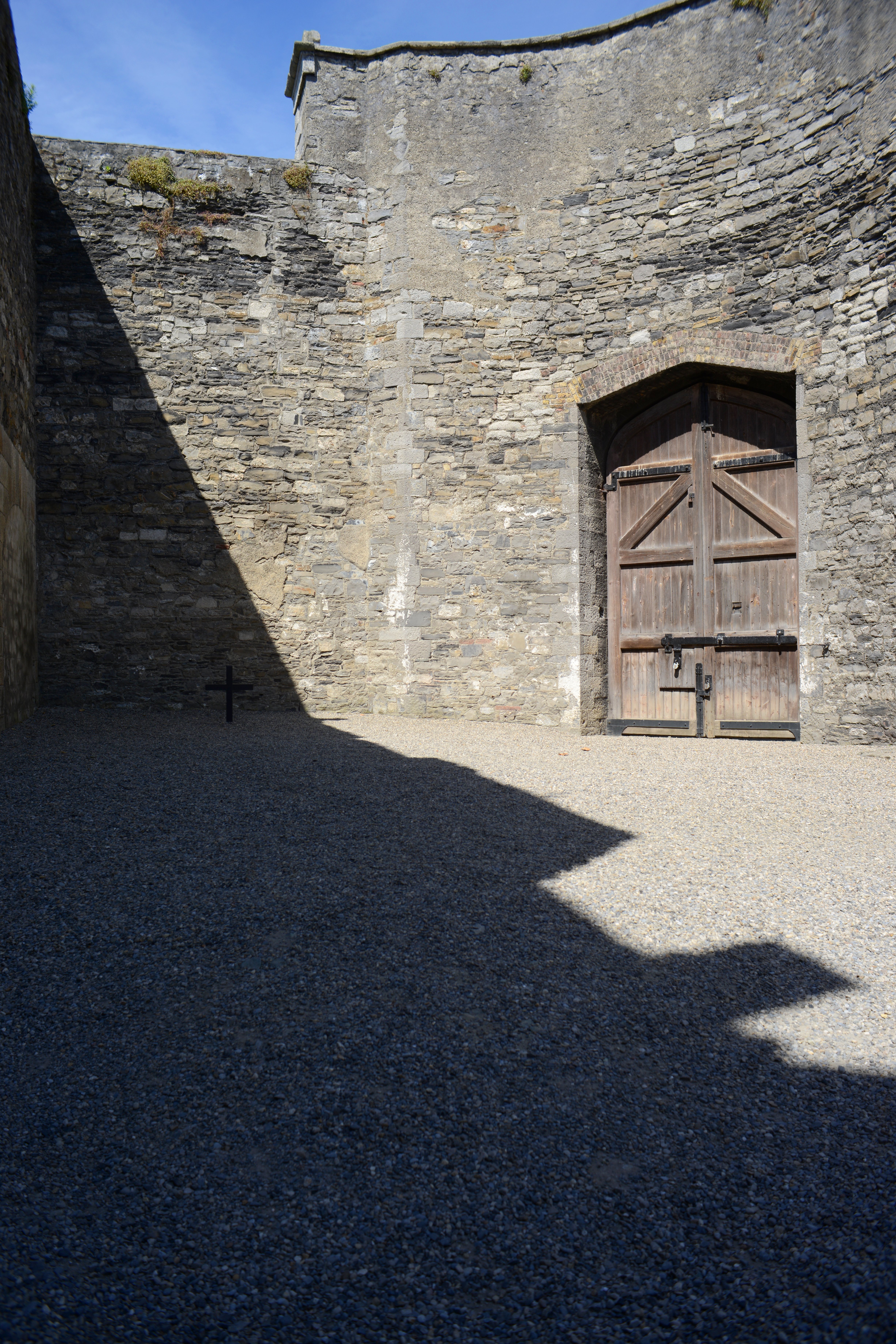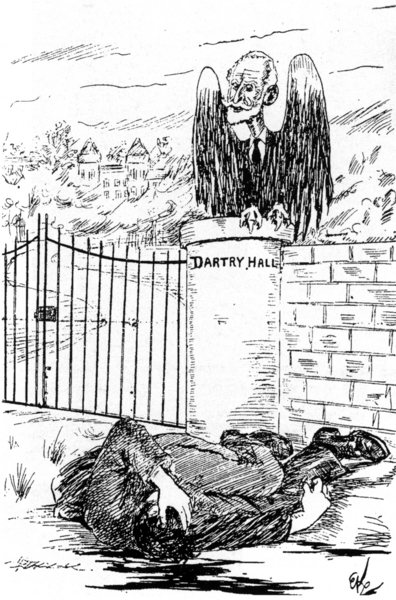|
The Irish Worker
''The Irish Worker'' was a newspaper produced by James Larkin, initially edited by Larkin and published in 1911 as ''The Irish Worker and Peoples' Advocate'', it was suppressed in August 1914. James Connolly edited the paper when Larkin was in jail during the 1913 Dublin Lock-out. Many public figures and writers featured in the paper, like the actor Andrew Wilson who was sub-editor, the journalist and historian Standish O'Grady and playwright Seán O'Casey whose early writings were published in the paper. by Paul Dillon. The artist Ernest Kavanagh provided cartoons for the paper. ''The Irish Worker'' was relaunched in 1923 following Larkin' ... [...More Info...] [...Related Items...] OR: [Wikipedia] [Google] [Baidu] |
ITGWU
The Irish Transport and General Workers Union (ITGWU), was a trade union representing workers, initially mainly labourers, in Ireland. History The union was founded by James Larkin in January 1909 as a general union. Initially drawing its membership from branches of the Liverpool-based National Union of Dock Labourers, from which Larkin had been expelled, it grew to include workers in a range of industries. The ITGWU logo was the Red Hand of Ulster, which is synonymous with ancient Gaelic Ulster. The ITGWU was at the centre of the syndicalist-inspired Dublin Lockout in 1913, the events of which left a lasting impression on the union and hence on the Irish Labour Movement. After Larkin's departure for the United States in 1914 in the wake of the Lockout, James Connolly led the ITGWU until his execution in 1916 in the wake of the Easter Rising. In turn, William O'Brien became the union's leading figure, and ultimately served as general secretary for many years. Throughout World ... [...More Info...] [...Related Items...] OR: [Wikipedia] [Google] [Baidu] |
Irish Worker League
The Irish Worker League was an Irish communist party, established in September 1923 by Jim Larkin, following his return to Ireland. Larkin re-established the newspaper ''The Irish Worker''. The Irish Worker League (IWL) superseded the first Communist Party of Ireland and became Ireland's affiliate with the Communist International. Background In July 1924 Larkin attended the Fifth Comintern Congress, held in Moscow, and was elected to its executive committee. Initially, the League was not organised as a political party and had no founding congress. Its most prominent activity in its first year was to raise funds for republican civil war prisoners. Relationship with the Comintern The Comintern was involved with the rise of the IWL as the Comintern used its influence to dissolve the first CPI and raise up Larkin and the IWL as the leadership of the Irish communist movement. The Comintern had strong ties with Larkin leading up to the creation of the IWL since he had led the Wo ... [...More Info...] [...Related Items...] OR: [Wikipedia] [Google] [Baidu] |
James Larkin
James Larkin (28 January 1874 – 30 January 1947), sometimes known as Jim Larkin or Big Jim, was an Irish republican, socialist and trade union leader. He was one of the founders of the Irish Labour Party along with James Connolly and William O'Brien, and later the founder of the Irish Worker League (a communist party which was recognised by the Comintern as the Irish section of the world communist movement), as well as the Irish Transport and General Workers' Union (ITGWU) and the Workers' Union of Ireland (the two unions later merged to become SIPTU, Ireland's largest trade union). Along with Connolly and Jack White, he was also a founder of the Irish Citizen Army (ICA; a paramilitary group which was integral to both the Dublin lock-out and the Easter Rising). Larkin was a leading figure in the Syndicalist movement. Larkin was born to Irish parents in Toxteth, Liverpool, England. Growing up in poverty, he received little formal education and began working in a variety of j ... [...More Info...] [...Related Items...] OR: [Wikipedia] [Google] [Baidu] |
James Connolly
James Connolly ( ga, Séamas Ó Conghaile; 5 June 1868 – 12 May 1916) was an Irish republican, socialist and trade union leader. Born to Irish parents in the Cowgate area of Edinburgh, Scotland, Connolly left school for working life at the age of 11, and became involved in socialist politics in the 1880s. Although mainly known for his position in Irish socialist and republican politics, he also took a role in Scottish and American politics. He was a member of the Industrial Workers of the World and founder of the Irish Socialist Republican Party. With James Larkin, he was centrally involved in the Dublin lock-out of 1913, as a result of which the two men formed the Irish Citizen Army (ICA) that year; they also founded the Irish Labour Party along with William O'Brien. Connolly was the long term right-hand man to Larkin in the Irish Transport and General Workers' Union (ITGWU) until taking over leadership of both the union and its military wing the ICA upon Larkin's departu ... [...More Info...] [...Related Items...] OR: [Wikipedia] [Google] [Baidu] |
Dublin Lock-out
The Dublin lock-out was a major industrial dispute between approximately 20,000 workers and 300 employers that took place in Ireland's capital and largest city, Dublin. The dispute, lasting from 26 August 1913 to 18 January 1914, is often viewed as the most severe and significant industrial dispute in Irish history. Central to the dispute was the workers' right to unionise. Background Poverty and housing Many of Dublin's workers lived in terrible conditions in tenements. For example, over 830 people lived in just 15 houses in Henrietta Street's Georgian tenements. At 10 Henrietta Street, the Irish Sisters of Charity ran a laundry that was inhabited by more than 50 single women. An estimated four million pledges were taken in pawnbrokers every year. The infant mortality rate among the poor was 142 per 1,000 births, extraordinarily high for a European city. The situation was made considerably worse by the high rate of disease in the slums, which was worsened by the lack of ... [...More Info...] [...Related Items...] OR: [Wikipedia] [Google] [Baidu] |
Standish James O'Grady
Standish James O'Grady ( ga, Anéislis Séamus Ó Grádaigh; 18 September 1846 – 18 May 1928) was an Irish author, journalist, and historian. O'Grady was inspired by Sylvester O'Halloran and played a formative role in the Celtic Revival, publishing the tales of Irish mythology, as the ''History of Ireland: Heroic Period'' (1878), arguing that the Gaelic tradition had rival only from the tales of Homeric Greece. O'Grady was a paradox for his times, proud of his Gaelic heritage, he was also a member of the Church of Ireland, a champion of aristocratic virtues (particularly decrying bourgeois values and the uprooting cosmopolitanism of modernity) and at one point advocated a revitalised Irish people taking over the British Empire and renaming it the Anglo-Irish Empire. O'Grady's influence crossed the divide of the Anglo-Irish and Irish-Ireland traditions in literature. His influence was explicitly stated by the Abbey Theatre set with Lady Gregory, W. B. Yeats and George William ... [...More Info...] [...Related Items...] OR: [Wikipedia] [Google] [Baidu] |
Seán O'Casey
Seán O'Casey ( ga, Seán Ó Cathasaigh ; born John Casey; 30 March 1880 – 18 September 1964) was an Irish dramatist and memoirist. A committed socialist, he was the first Irish playwright of note to write about the Dublin working classes. Early life O'Casey was born at 85 Upper Dorset Street, Dublin, as John Casey, the son of Michael Casey, a mercantile clerk (who worked for the Irish Church Missions), and Susan Archer. His parents were Protestants and he was a member of the Church of Ireland, baptised on 28 July 1880 in St. Mary's parish, confirmed at St John the Baptist Church in Clontarf, and an active member of St. Barnabas' Church on Sheriff Street until his mid-20s, when he drifted away from the church. There is a church called 'Saint Burnupus' in his play '' Red Roses For Me''. O'Casey's father died when Seán was just six years of age, leaving a family of thirteen. The family lived a peripatetic life thereafter, moving from house to house around north Dublin. ... [...More Info...] [...Related Items...] OR: [Wikipedia] [Google] [Baidu] |
Ernest Kavanagh
Ernest Kavanagh (1884 – 25 April 1916) was a Dublin born cartoonist who contributed to a number of political publications in the early part of the 20th century. Biography Kavanagh's cartoons were published using his initials E.K. He provided cartoons for The Irish Worker newspaper of James Larkin's Irish Transport and General Workers' Union. He produced cartoons published alongside poems by his sister the writer and poet Maeve Cavanagh McDowell. As well as supporting the working class his cartoons attacked the recruitment drive for World War One and supported the suffragette movement. He contributed cartoons to the suffragette paper, ''The Irish Citizen'', ''Fianna'' and ''Irish Freedom''. A non-combatant, he was struck and killed by a bullet during the Easter Rising The Easter Rising ( ga, Éirí Amach na Cásca), also known as the Easter Rebellion, was an armed insurrection in Ireland during Easter Week in April 1916. The Rising was launched by Irish republicans ag ... [...More Info...] [...Related Items...] OR: [Wikipedia] [Google] [Baidu] |
Political Newspapers Published In Ireland
Politics (from , ) is the set of activities that are associated with making decisions in groups, or other forms of power relations among individuals, such as the distribution of resources or status. The branch of social science that studies politics and government is referred to as political science. It may be used positively in the context of a "political solution" which is compromising and nonviolent, or descriptively as "the art or science of government", but also often carries a negative connotation.. The concept has been defined in various ways, and different approaches have fundamentally differing views on whether it should be used extensively or limitedly, empirically or normatively, and on whether conflict or co-operation is more essential to it. A variety of methods are deployed in politics, which include promoting one's own political views among people, negotiation with other political subjects, making laws, and exercising internal and external force, including w ... [...More Info...] [...Related Items...] OR: [Wikipedia] [Google] [Baidu] |
.jpg)



